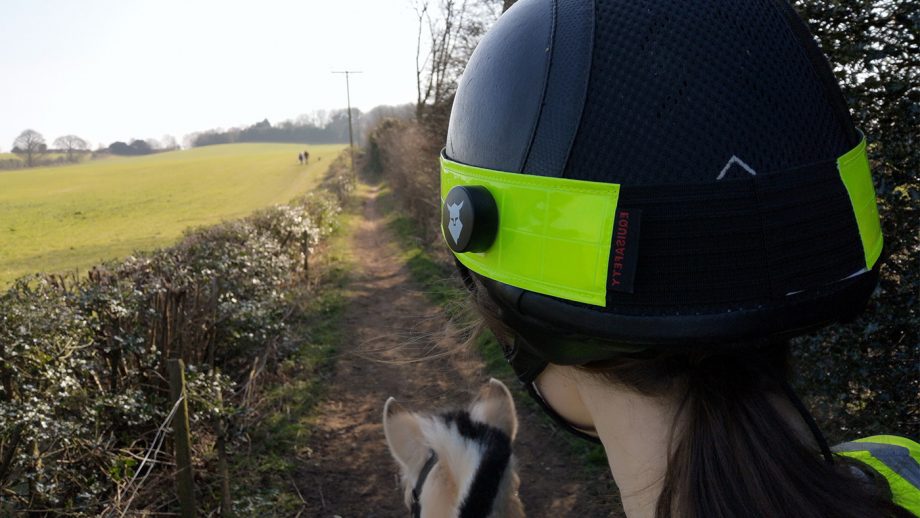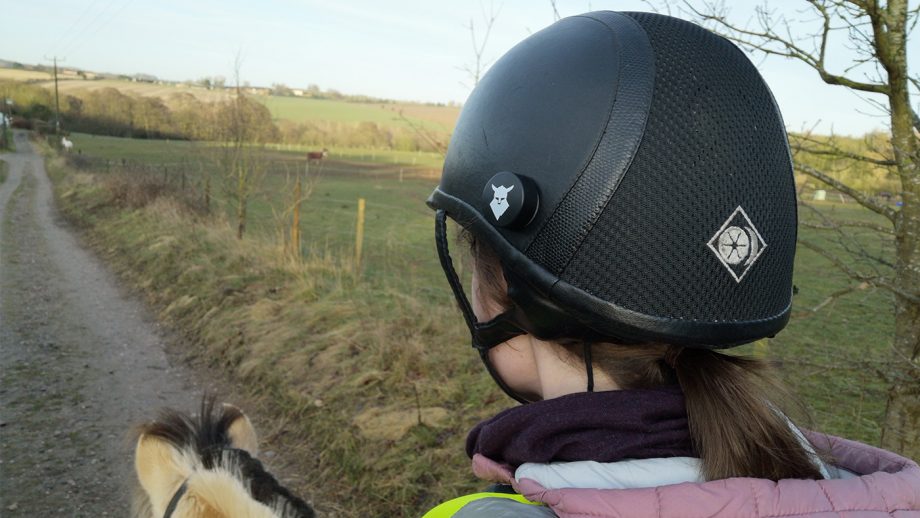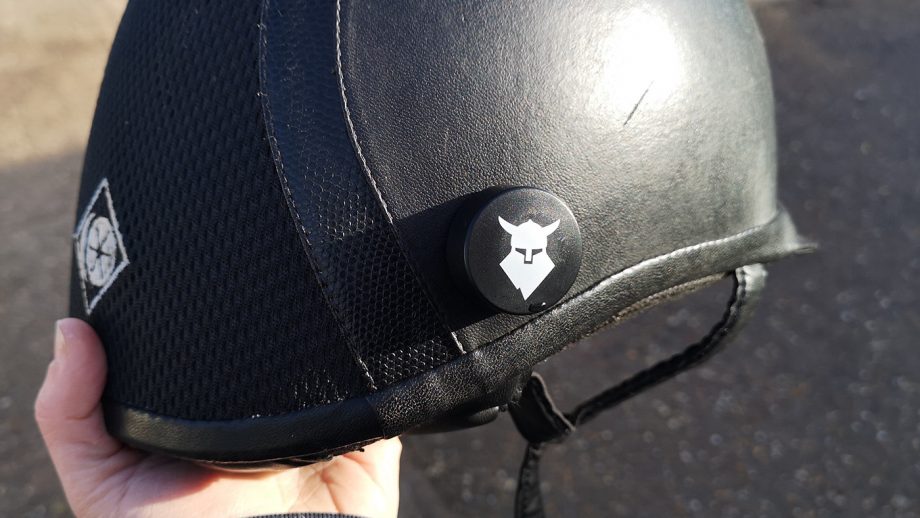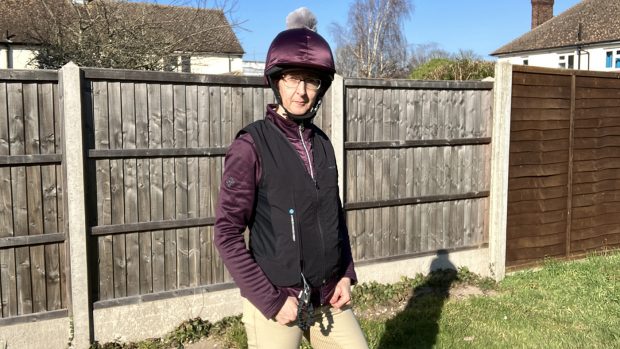Uvex Tocsen Crash Sensor
Pros
- Easy to use for the emergency contact
- Very accurate location
- Good battery
- App doesn’t drain phone battery
- Doesn’t need to be attached directly to hat
Cons
- The app can be a bit clunky
Manufacturer:
Price as reviewed:
£79.99
Uvex Tocsen Crash Sensor
The Uvex Tocsen Crash Sensor is a small device that attaches to your riding hat – or other sports helmet – behind the ear. It works in conjunction with an app that stores your emergency contacts and, in the event of a fall, can send them an alert.

The sensor arrived in a small box that contained the sensor (which is available in black or pink), a charging lead, attaching sticker, instruction sheet and two decorative stickers. The sensor needs charging for two hours before you can use it. This was easy enough as it connects to a standard USB charger. When I plugged it in I did expect a little light to appear to say it was on, so at first I wasn’t sure it was charging. Then after fiddling about with it I realised it made a jingle noise once it was plugged in and charging, which was helpful.

Once charged, I set about attaching it to my hat. This was probably the easiest part of the setup process. All I had to do was use the double-sided sticker provided to position and secure it. I have a leather-look helmet and was worried it might damage the covering, but I’ve removed it to check and you’d never have known it was there.

The app can be downloaded for free onto any iOS or Android device and this was simple. Setting it up was a little more complicated and there weren’t detailed instructions in English. I filled in my details – I had to add my emergency contacts manually, as although the app picked up my contact list I seemed to be unable to select them – and then connected to the sensor via Bluetooth.
When you add an emergency contact, it sends them a text but doesn’t say who it’s from. I hadn’t pre-warned my colleague, Sophie Cheeseman, I was adding her, so at first she thought the text was spam, so I’d advise giving your contacts a heads-up before you start. Contacts can download the app, too, but this isn‘t essential and we tested using the text feature.
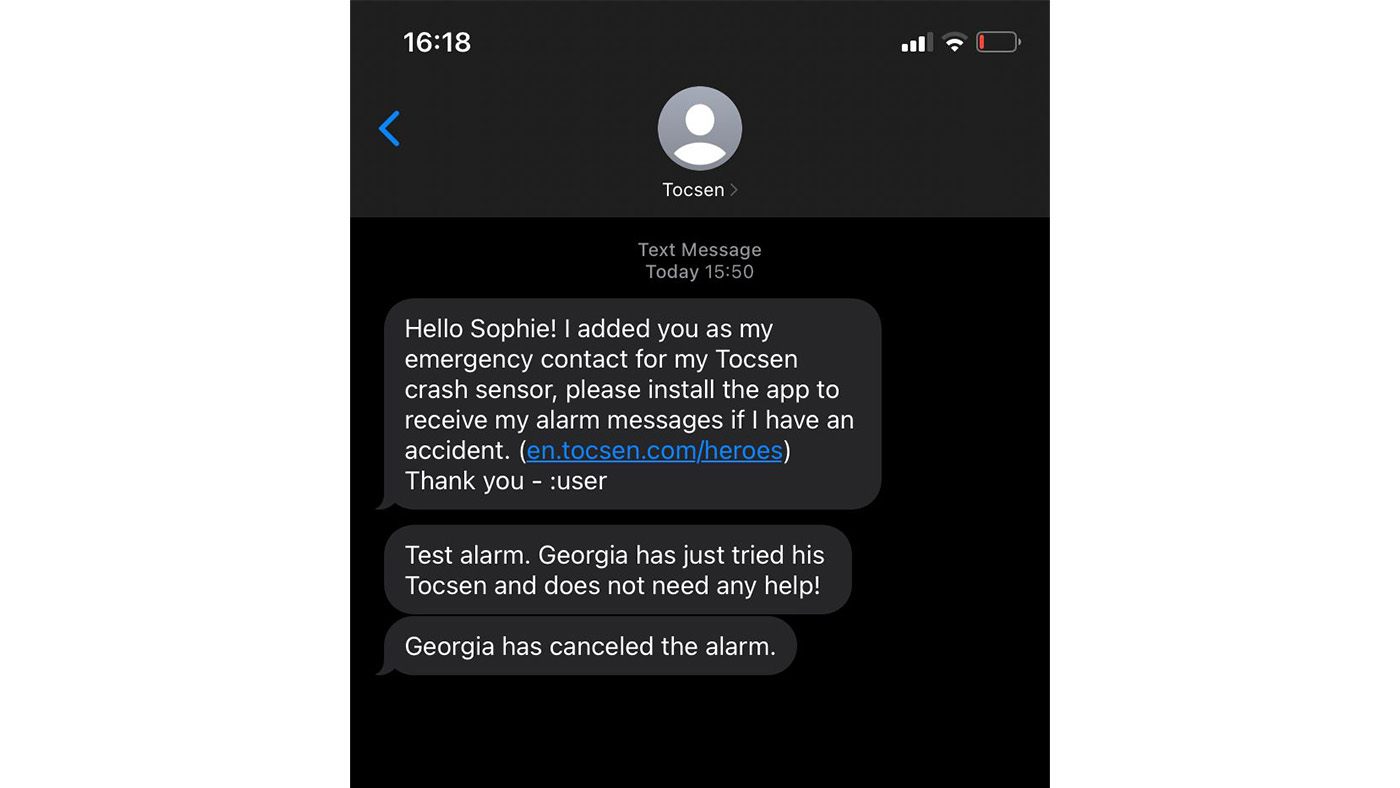
The app allows you to simulate a fall, so that you and your contacts can see what to expect. It took me quite a few tries to successfully run the simulation, but I think this was user error as I’ve ran multiple since to show friends at the yard with less problems. This time the message did explain who it was from and that I was running a simulation. When you fall, the app will give you 30 seconds to say you’re OK and cancel the alert before sending a message to your contacts. If in that time you’re getting yourself up and catching your horse, you can notify them after but it allows you to prevent the worry if you’re quick. If you don’t have mobile signal where you ride, there is also a feature that alerts your contacts if you haven’t logged your return by your expected return time.
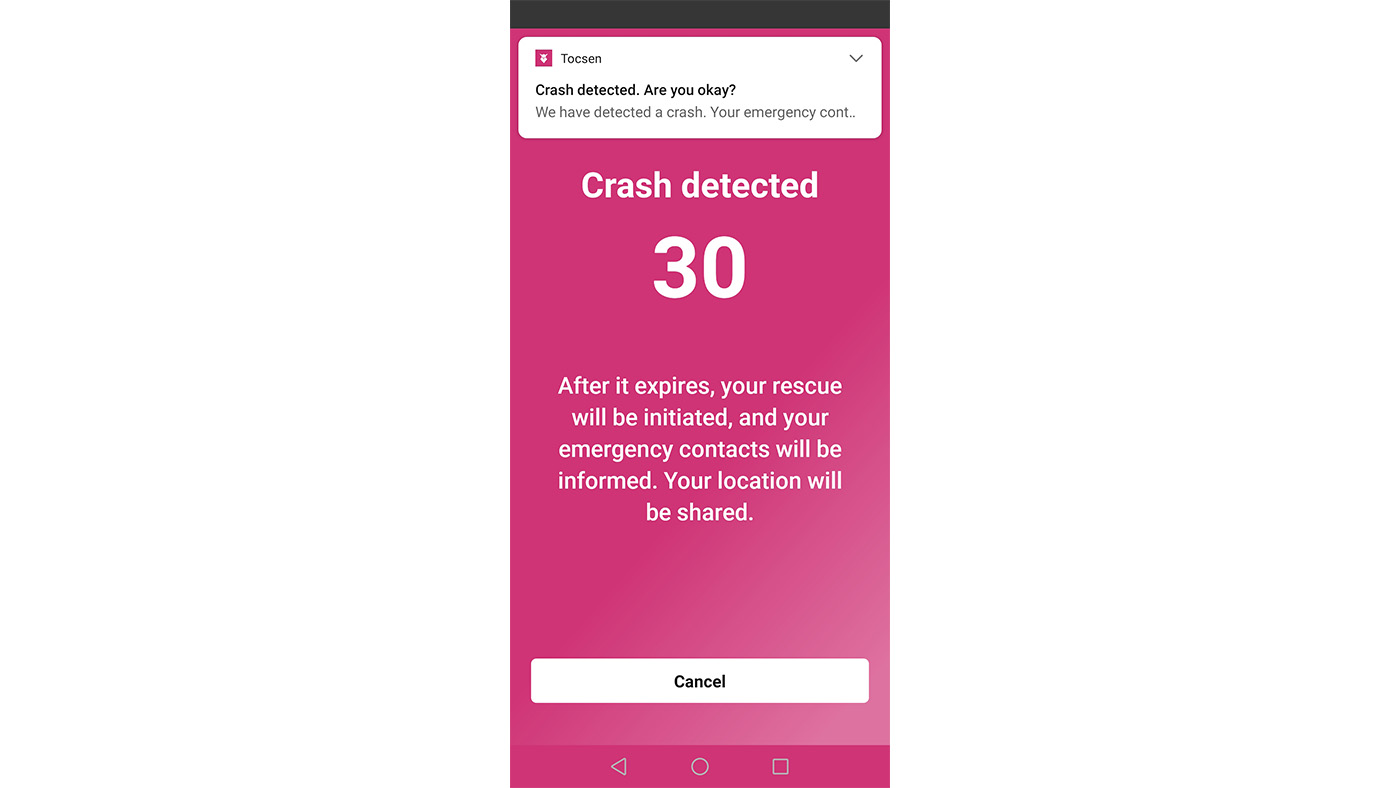
The sensor is small but quite noticeable. I forgot it was there, but everyone I rode out with noticed it and asked what it was. Once it’s attached, you can’t take it off without replacing the sticker and only one is provided. This means you couldn’t take it off for competing or to charge the device if you attached it directly to your hat so I would recommend attaching it to a hi-vis hat band (I used this one from Equisafety) rather than your hat. I leave my hat at the yard, so this saves me bringing the whole thing home when I want to charge it – I can just bring the band – but it also means that I can lend the Tocsen to friends and take it off for competing.

Uvex Tocsen Crash Sensor attached directly to hat

Uvex Tocsen Crash Sensor attached to hat band
To use the device when you’re riding, all you need to do is turn on your Bluetooth and connect to the device. I also run the Equilab app while I’m hacking, so I was worried about the two draining my battery, but it doesn’t use as much battery as I anticipated. So far the Tocsen’s battery has lasted really well – it claims to last three months with average use, although I’ve found it’s run down a little quicker so I may use it more than average.
I haven’t fallen off while using the sensor, but the simulation has given me reassurance that it will work. I did, however, also drop the Tocsen on the floor at home once I’d finished setting it up and it activated immediately, began to alarm and sent Sophie an alert, which was really good to see.

Screenshot of message received by emergency contact
The text message includes a link, which allowed Sophie to see my exact location – she was relieved to see I was at home – and gave her the option to Google Map to me or call me, which was a really smooth transition. I was pleased with the map as if I fell off in the woods and had one of my fellow liveries as my emergency contact, they would know exactly where to find me – and if it was a local friend, they would be able to use Google Maps very easily.

Following the link shows your emergency contact where your alert has been sent from
Although I had a few teething problems setting it up and using the app, I can really see how the Uvex Tocsen Crash Sensor would be handy to have – plus most importantly it was easy for my emergency contact to use. I mostly hack, live alone and am often one of the last to leave the yard in the evening during the summer. If I didn’t return from a hack it’s quite possible that no one would notice for a good while, so for someone like me it could be a life-saver. Equally, if you have a child hacking out it can give you peace of mind.
It retails at £79.99, which is a lot for a small device, but when you consider what it could do it’s harder to put a price on it. Plus, it’s good to note that the app is free – and you do not need to pay a subscription for it to work. It looks like it will last a long time and although it was easy enough to remove, I think it’s unlikely to fall off. Plus, now that I’ve found a way to detach it from my hat by using the hat band, the value has really increased for me.
Verdict
A great bit of kit if you regularly hack alone.
View now at amazon.co.uk or ebay.co.uk
Who tested this device?
Georgia Guerin looks after Horse & Hound’s shopping, fashion and product content. She owns a Norwegian Fjord horse who she regularly hacks alone in woodland for hours at a time.
Find out more about how Horse & Hound tests products
You might also be interested in:

8 apps no busy rider should ever be without
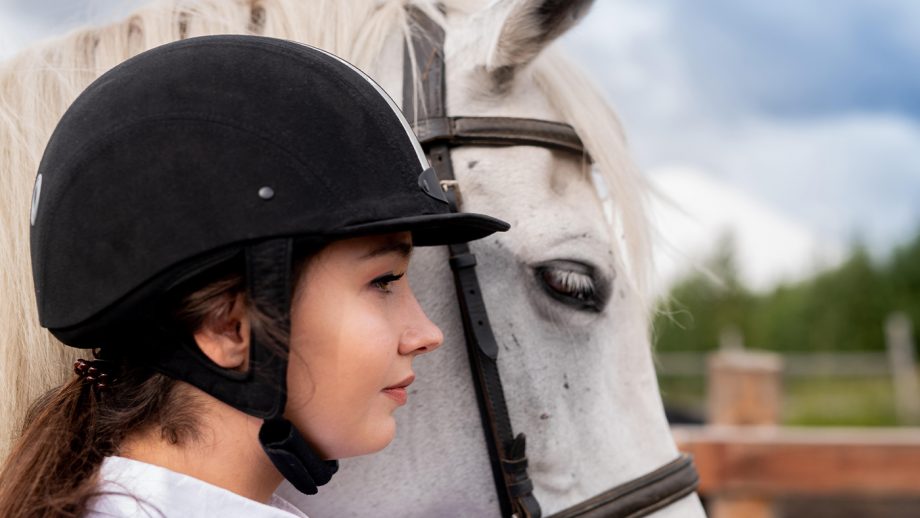
13 riding hats that are worth your attention

Subscribe to Horse & Hound this spring for great savings
Horse & Hound magazine, out every Thursday, is packed with all the latest news and reports, as well as interviews, specials, nostalgia, vet and training advice. Find how you can enjoy the magazine delivered to your door every week, plus options to upgrade your subscription to access our online service that brings you breaking news and reports as well as other benefits.



